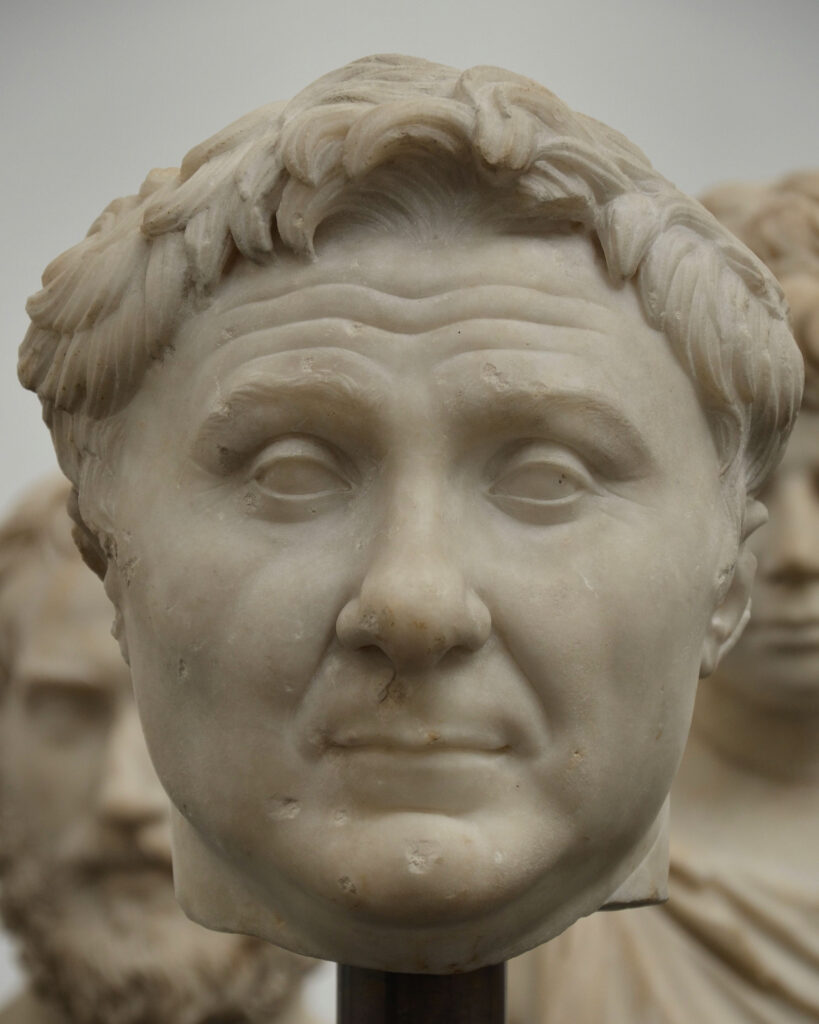Many are familiar with Alexander the Great and his distinctive portraiture. And indeed the young genius was idolized from the time of his death to Napoleon and beyond!
Shown here is Pompey the Great (Pompey Magnus), who built his military reputation young and forcefully. Before he formally added Magnus to his name (deliberately echoing Alexander who had died several centuries before), he was nicknamed ‘adulescentulus carnifex’ (‘the young butcher’) for his brutal campaigns in Sicily and elsewhere.
He was a largely regarded as the military backbone of the first triumvirate (over Caesar and Crassus) and its most popular member for some time. After that all went to hell and Caesar crossed the Rubicon etc., Pompey went East with his forces, relentlessly pursued by Caesar until an eventual defeat at Pharsalus. Pompey landed with his wife in the shores of Egypt where the young pissant Ptolemy XIII was engaged in a civil war with his sister Cleopatra (that Cleopatra!). The young stinker and sycophant had Pompey killed – his body cremated and his head pickled – an outrage that deeply offended Caesar.

But let’s talk about this head – a glorious portrait now in Copenhagen. Lots of forces are at play here (and they don’t necessarily play well together to modern eyes, and perhaps didn’t to ancient ones either) including those expected of a military man of the first century B.C. (I won’t bang on about verism) with appropriately slack flesh and wrinkles reflecting his age.
But his standard military haircut has been brushed up above the brow, certainly a homage to Alexander’s leonine anastole. And in that creased brow and in those deep-set eyes (not exactly Alexander’s melting gaze) perhaps we are to read a pothos or yearning similar to his idol, for battles ultimately unrealized.




